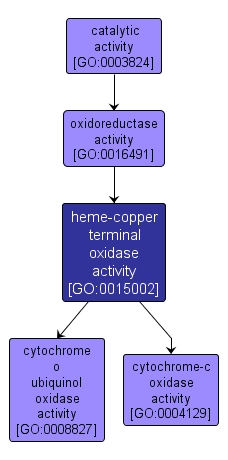GO TERM SUMMARY
|
| Name: |
heme-copper terminal oxidase activity |
| Acc: |
GO:0015002 |
| Aspect: |
Molecular Function |
| Desc: |
Catalysis of the four-electron reduction of dioxygen (O2) to water, coupled to generation of a proton electrochemical gradient across a membrane. |
Synonyms:
- haem-copper terminal oxidase activity
|
|

|
INTERACTIVE GO GRAPH
|














